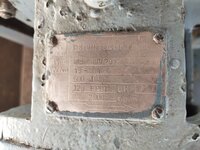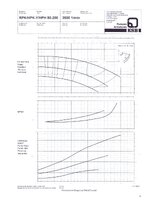Dear Fellow Members
This is Sulaiman Dawood working as a Project Engineer in Energy Futures Consulting.
I am doing a project for a client and I am stuck at pump analysis with VFDs.
The nameplate of a pump is attached along with the pump curve.
Can you please guide which curve to use with the nameplate's parameters? Also, how will the pump input power change if we reduce the rpm, given that BHP is 18.8kW on the nameplate?
Looking forward to your guidance.
Best Regards
Sulaiman
This is Sulaiman Dawood working as a Project Engineer in Energy Futures Consulting.
I am doing a project for a client and I am stuck at pump analysis with VFDs.
The nameplate of a pump is attached along with the pump curve.
Can you please guide which curve to use with the nameplate's parameters? Also, how will the pump input power change if we reduce the rpm, given that BHP is 18.8kW on the nameplate?
Looking forward to your guidance.
Best Regards
Sulaiman
Attachments
Last edited:


